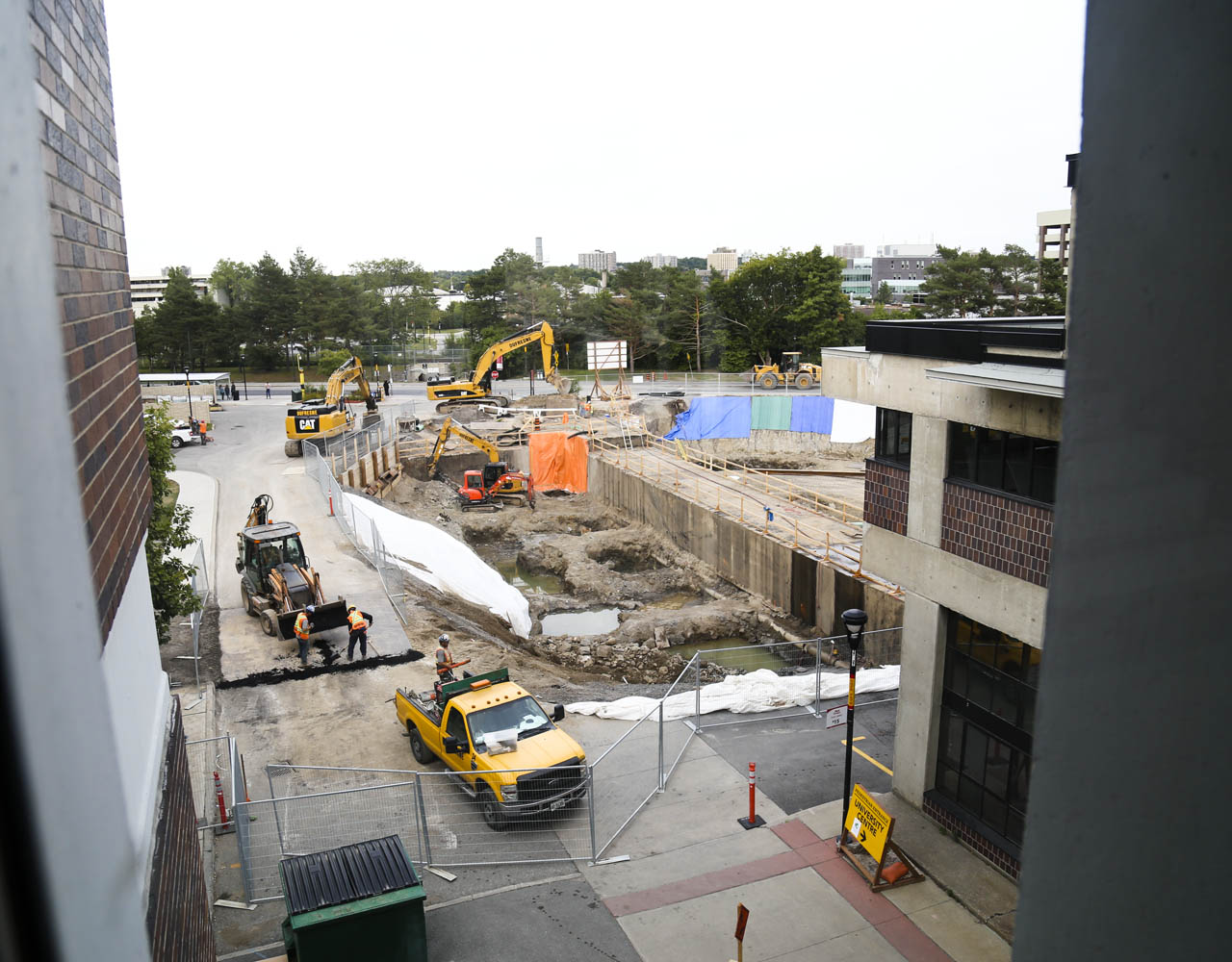Concerns have been raised by students over accessibility on campus as a result of current construction. Kamilla Riabko, a social work student at Carleton, said ongoing construction has been a hindrance to getting around the school.
She said that construction on campus creates limited parking spaces for students with special permits and that this is a problem. Special permits are accessible parking permits that are close to the university buildings.
“Every lot had a certain number of spots in it. They were fairly close to the entrances that had access to elevators,” Riabko said.
However, over the years, the number of special permit spots on campus have been reduced, Riabko said.
“As the years went on, I noticed some of those special permits being turned into individualized permits, so people would actually buy out those spots,” she said. “The library lot went from five special permits to two, which is difficult, not just because I have only two chances of getting into the library, but also because a lot of cars use those spots for loitering and waiting for people to come.”
For Riabko, the ongoing construction of the Nicol Building—the new home of the Sprott School of Business which will be replacing the parking lot in front of the University Centre—is problematic for the same reasons.
“I noticed that they set up five special permit spots at UC, and [once] out of curiosity I came out of my car,” she said. “There were three cars parked, and only two of them had the [special] permit, so I don’t know if the other car was loitering.”
Trevor Stewart, the director of capital renewal and construction with Carleton facilities and management planning, said the university has a strong commitment to a barrier-free campus.
“We ensure that the pathways and the walking paths are fully accessible arounds the sites, such as to and from other buildings on campus,” he said.
Stewart added that the special permit parking spots were assigned after talking with Equity Services and the Paul Menton Centre (PMC).
“We did a review with Equity Services, and the PMC identified that [there are] five users that were using the parking spots, so we designated the five spots to the same individuals,” he said. “With that, we also have designated park-and-ride spots that drop the OCTranspo bus off as well as the handicap ParaTranspo is dropped off at the main doors.”
Riabko said she uses her car to navigate around campus instead of ParaTranspo because her disability prevents her from using the provided services.
“I’m an external navigator,” she said. “So having a special permit really helps me navigate in having to go to other buildings by using my car . . . basically, I’m preventing an injury by using my car.”
According to Brett Babcock, the programming coordinator for the Carleton Disabilities Awareness Centre (CDAC), the construction on campus has also increased the time it takes students to reach certain places on campus.
“As a wheelchair user, the construction has not been ideal, but it has not impacted my ability to attend class,” he said in an email. “That being said, in order to navigate [the] campus I now use alternative routes, [which] has ultimately led to slight increases in the times and distances it takes for me to get around.”
The construction is also problematic for students with visual impairments, Babcock said.
“Students with visual impairments have habitual routes they take to navigate/get around campus,” he said. “Additional variables such as uneven surfacing, lack of tactile indicators, temporary fencing, and loud noises have caused problems for these students.”
Riabko said she feels that the university needs to dedicate more time to accessibility plans.
“It’s almost like we’re a mini city, so just like Ottawa always has construction going on at different places, Carleton will have it as well,” she said. “But . . . I feel like they should probably do a better job at designating time to the accessibility plans every time a construction happens.”
Babcock said there’s a “long-term benefit for disabled students.”
“On a positive note, the new construction must comply with the Accessibility for Ontarians with Disabilities Act, meaning the new buildings will be accessible,” he said.
Riabko said she emailed University Safety services. According to the email chain, University Safety assistant director Christopher Moy said an additional accessible parking space will be installed at the other end of Lot 10 next week to maintain accessibility for students.
—With files from Temur Durrani
Photo by Jasmine Foong






